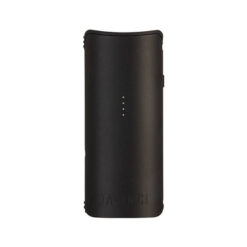Cannabis is known for its intoxicating effects, typically resulting from intentional use through smoking, vaping, or ingestion. However, many people – particularly non-users or those new to the world of cannabis – often express concern about a so-called “contact high” or “secondhand high.” This concept suggests that simply being in the same room as someone smoking weed might be enough to make you feel the effects. But is there any truth to this claim? Or is it just another weed-related myth that is persisted due to pop culture and hearsay?
In this article, we will explore what a cannabis contact high really is, whether it is backed by science, what factors influence it, and how it differs from secondhand tobacco smoke. We will also debunk some common misconceptions and clarify what is fact and what is fiction.
Defining A Cannabis Contact High
A contact high, sometimes referred to as a secondhand high, is the idea that a non-user can become intoxicated by cannabis simply by being near someone who is consuming it. This is most commonly associated with smoking or vaping, where the non-user inhales the smoke or vapour passively.
Unlike active cannabis use – where cannabinoids like THC (tetrahydrocannabinol) are directly inhaled or ingested – a contact high refers to indirect exposure. This phenomenon is often dramatised in films or exaggerated in stories, leading many to believe that even minimal exposure could result in intoxication, a failed drug test, or impaired behaviour.
The Science Behind THC And Secondhand Smoke
THC, the psychoactive compound in cannabis, is responsible for the “high” that cannabis users experience. For someone to get high, a sufficient amount of THC must enter the bloodstream and interact with cannabinoid receptors in the brain.
When cannabis is smoked, most of the THC is absorbed directly by the smoker. Studies suggest that between 50% and 70% of THC is retained by the smoker on each inhale, with the rest released into the air through smoke exhalation or sidestream smoke (the smoke that drifts from the burning joint or pipe). This raises a key question: is there enough THC left in that secondhand smoke to cause a high?
What Research Says: Can You Really Get High?
Over the years, several studies have looked into the possibility of secondhand highs. The consensus from these controlled experiments is that while it is technically possible, the conditions under which someone would experience a contact high are very specific and unlikely in most everyday situations.
First Suggestive Evidence
One of the earliest studies published in The New England Journal of Medicine involved exposing non-smokers to cannabis smoke in an unventilated room. Participants showed minimal detectable levels of THC in their blood, but no measurable behavioral or cognitive effects.
A Johns Hopkins Study: The Ventilation Factor
More recently, researchers at Johns Hopkins University conducted a controlled study in 2015 using high-potency cannabis. They placed non-smokers in an unventilated chamber with several active smokers. After one hour of exposure:
- Some participants reported feeling “light-headed” or “a bit high”
- Trace levels of THC were found in their blood and urine
- However, in a ventilated setting, these effects disappeared
The study concluded that secondhand exposure in poorly ventilated spaces could, in rare instances, lead to very mild intoxication or detectable THC levels, but this was not the norm in most social environments.
Contact High Vs. Placebo Effect
Many who claim to experience a contact high may not actually be under the influence of THC. Instead, their experience could be psychological. This is often due to:
- The power of suggestion: Knowing others are high can create an expectation to feel something
- Environmental cues: Loud music, dim lighting, and altered social settings may alter perception
- Social pressure or anxiety: Feeling out of place can lead to physiological responses that mimic intoxication (such as dizziness or heightened awareness)
This is known as the placebo effect, where symptoms are experienced due to belief or expectation rather than a chemical reaction in the body.
Can You Fail A Drug Test From A Contact High?
One of the biggest myths about contact highs is that they could cause you to fail a drug test. Fortunately, science is clear on this point: the odds of failing a drug test from secondhand exposure are extremely low.
Even in the extreme Johns Hopkins study mentioned above, only a few subjects showed trace THC in their urine, and these levels were below the typical thresholds used in workplace testing. Under normal social conditions – like being in a room where cannabis is smoked with average ventilation – the amount of THC you would inhale is not enough to trigger a positive result.
Contact High From Vaping Or Edibles?
The concern around secondhand highs generally centers on smoking cannabis. But what about vaping or edibles?
- Vaping: Because vapour dissipates more quickly than smoke and contains lower amounts of sidestream particles, secondhand exposure from vaping is even less likely to cause any psychoactive effects.
- Edibles: Since edibles do not produce smoke or vapour, there is zero risk of getting a contact high from someone eating a cannabis gummy or brownie next to you.
Recommended products
-
BLK Rotary Dry Herb Vaporizer
R1,575.00 -
DynaVap – “M7” Vaporizer
R1,750.00 -
DAVINCI MIQRO-C Vaporizer
R2,750.00 -
PUFFCO Peak Pro Vaporizer
R7,500.00
How Contact High Myths Persist
Pop culture has played a significant role in keeping the myth of the contact high alive. Countless TV shows, stoner comedies, and anecdotal stories depict non-smokers getting hilariously high just by being in the vicinity of a group of cannabis users.
While these portrayals are meant for laughs, they have also contributed to misinformation. In reality, the kind of heavy, enclosed-room exposure often shown in media is very different from what most people experience in social settings.
Responsible Cannabis Use In Shared Spaces
Whether you are a regular user or just cannabis-curious, being aware of how your consumption affects others is important. Here are a few tips for responsible use:
- Smoke in well-ventilated areas or outdoors whenever possible
- Ask permission before lighting up around others
- Use edibles or vaporizers to reduce smoke and odour
- Be mindful of children and pets who may be more sensitive to airborne chemicals
The idea of getting high from secondhand cannabis exposure has been exaggerated over the years. While it is technically possible under extreme, unventilated conditions, the average social scenario poses no real risk of intoxication. Much of what people perceive as a contact high can be attributed to the placebo effect or anxiety.
So if you find yourself at a party or gathering where cannabis is being used and you are not partaking, rest easy – you will not get high just by being there. Instead of worrying about contact highs, the conversation should shift to education, ventilation, and respectful use practices. As cannabis becomes more widely accepted, debunking myths like this helps remove stigma and promotes safer, more informed use.










